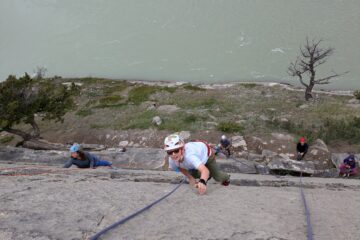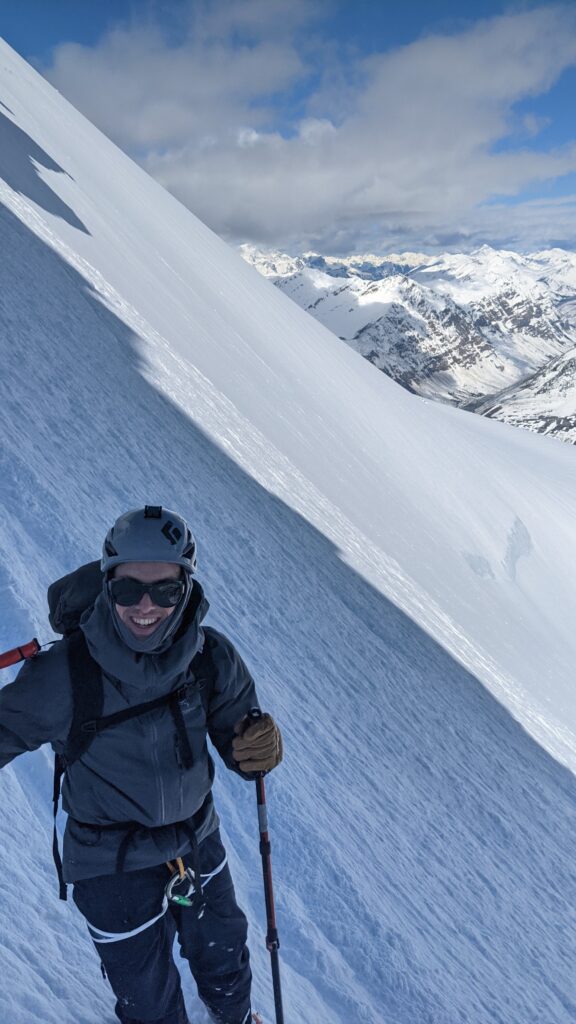
I met up with Jeremy Cherlet, Jessica Ferguson (Training and Development Chair) and Geoff Michalak early on Sunday, May 02 to attempt a climb and ski descent of the Kahl Route on the Stanley N Face (Grade III). Disclaimer: all current COVID-19 public health guidelines were followed and it is important to continue to read and follow these changing guidelines to keep each other safe and slowly return to a new normal. Also, special credit to Jeremy for most of the photos shared in this report.
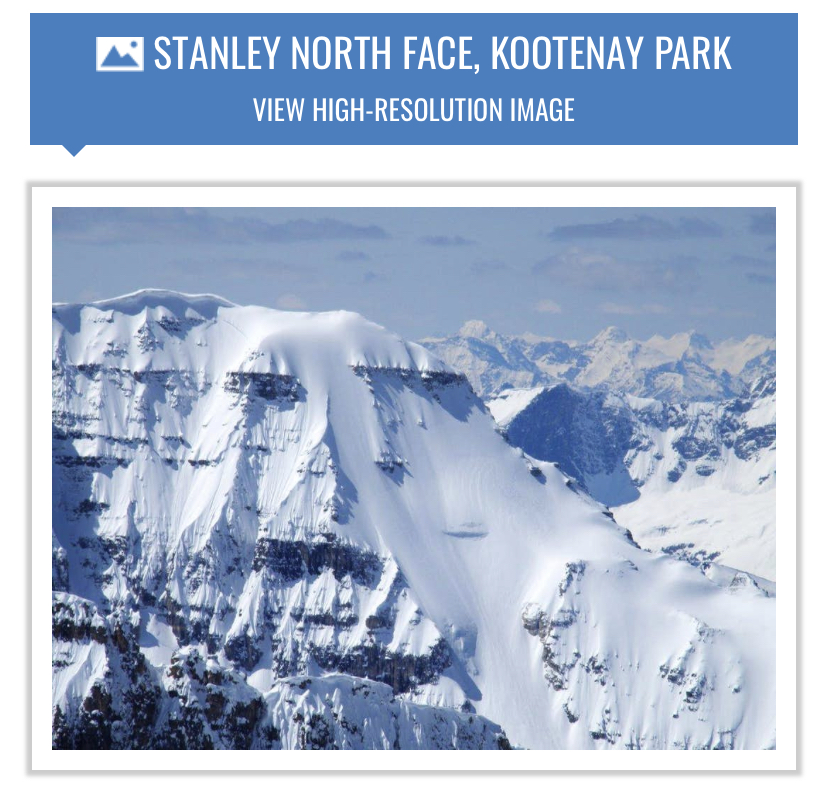
We parked at the Stanley Glacier Trailhead at around 4:00 am and set off shortly after. The start of the route follows the summer trail up towards the toe of the Stanley Glacier. The skies were clear, which brought a good overnight freeze and fast travel.
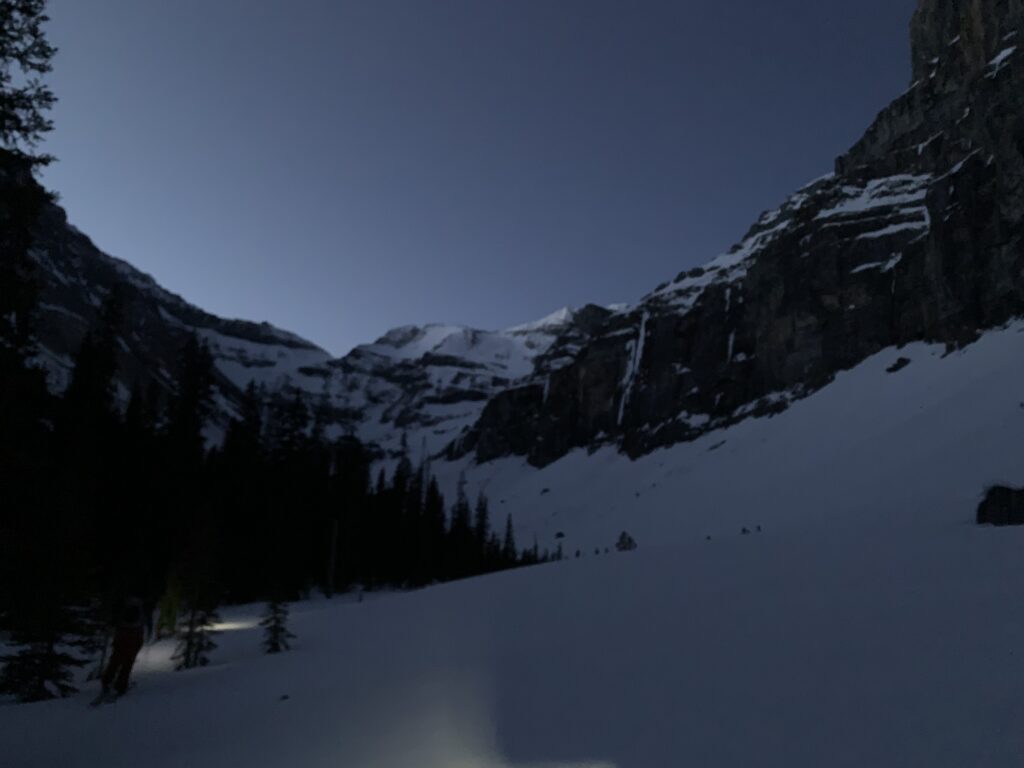
In less than a couple of hours, we were starting onto the steeper sections of the glacier. Great coverage and supportive snow got us gaining elevation quickly as the sun rose over the adjacent peaks.
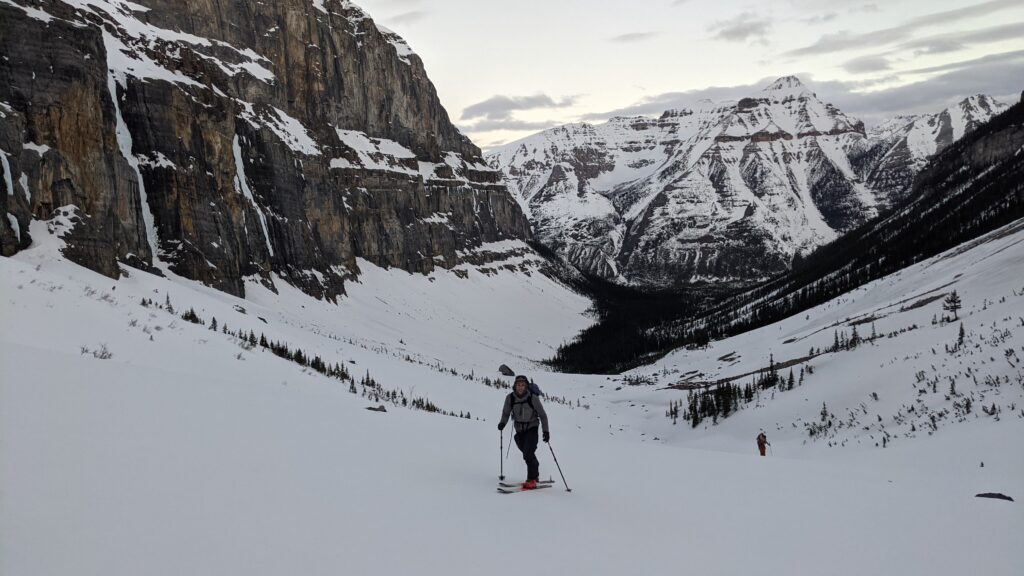
The toe of the glacier is quite steep, so we chose to boot pack. With 3m+ coverage in most places probed, and a firm supportive pack, we were feeling confident in the glacier coverage here. With a party (who left at 2:00am and were well off the slopes directly above) ahead of us setting steps, we also got to save our legs a bit.
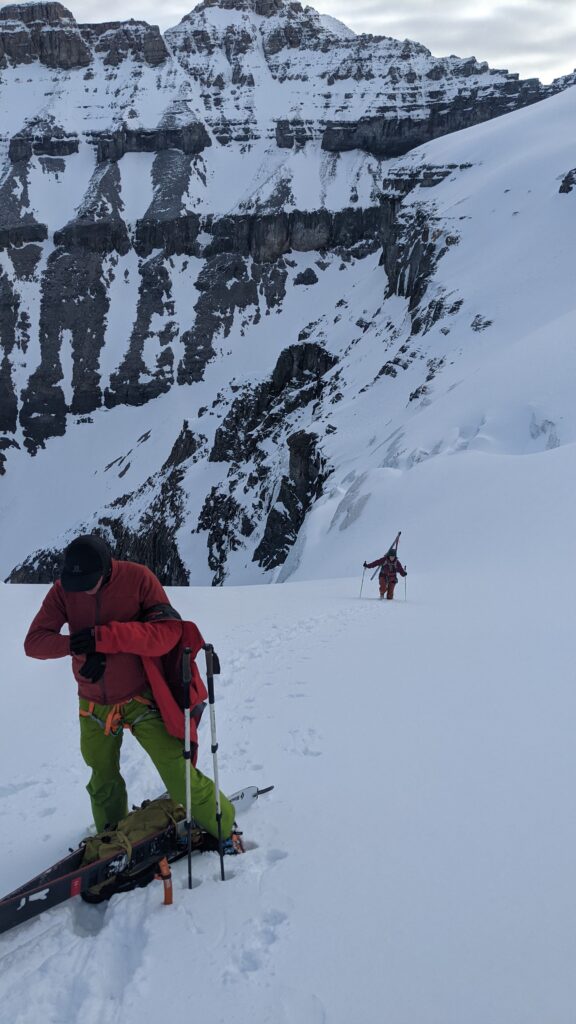
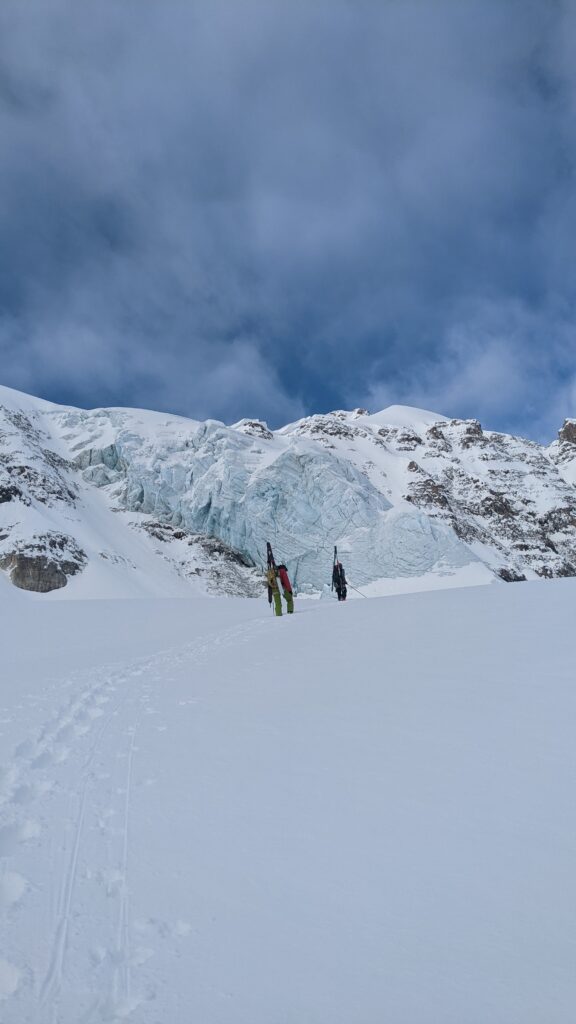
After moving quickly through the most appreciable objective hazards, a large glacial bench is traversed to the bottom of the Kahl Route. A soloist snowshoer had joined the ascent crews at this point, which is not a recommended option for this route.
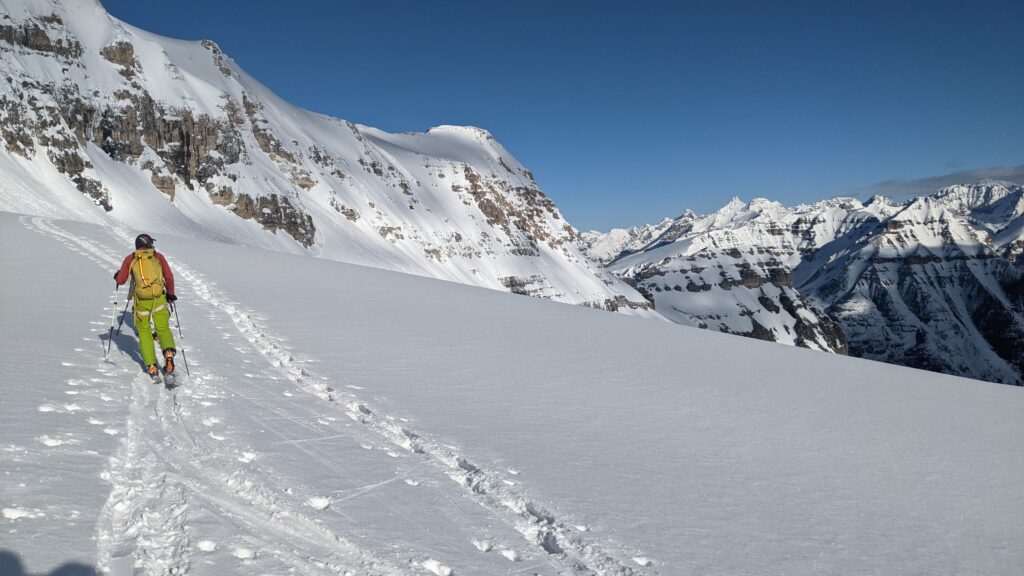
Once reaching the bottom of the main route, we transitioned to crampons and ice axes and started our way up the face. It paid off being the second party climbing the route, as we again saved our legs with a well set ‘pack. We noticed the first party topping out on the face as we got to about 1/3 the way up. With the cold, clear, and windless conditions, the first party would wait near the summit for us to finish the ascent before skiing the line.
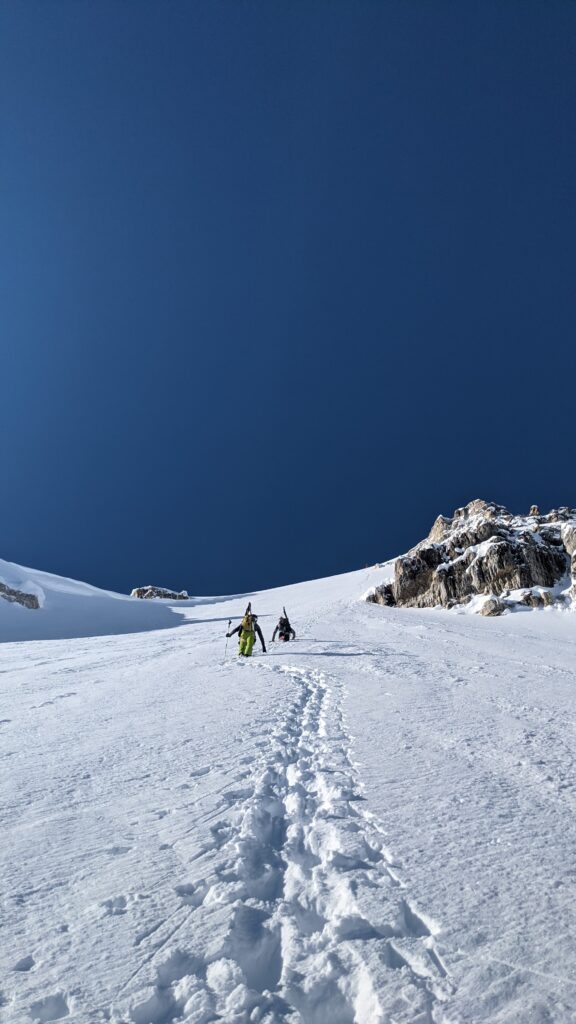
After making our way up the face, we were greeted by the other team who were enjoying a quick rest and early lunch with outstanding views of the surrounding peaks. With it now being 9:30am, the sun was starting to warm up the air even at over 3,000m elevation. We chose to quickly walk over to the summit and start our descent before things heated up.

Now, it was time for the main attraction, and we let the crew ahead of us get well off the slope before committing. One at a time, we carefully worked our way down the face. At just over 50 degrees near the top and without relief until the bottom, the skiing was technical and committing. Good sluff management and multiple checkpoints helped managed the risks of the descent. With things just starting to soften up, the snow quality was excellent and the exposure of the six hundred vertical metre face, massive. I can see why this is one of the most classic ski descents in the Rockies.

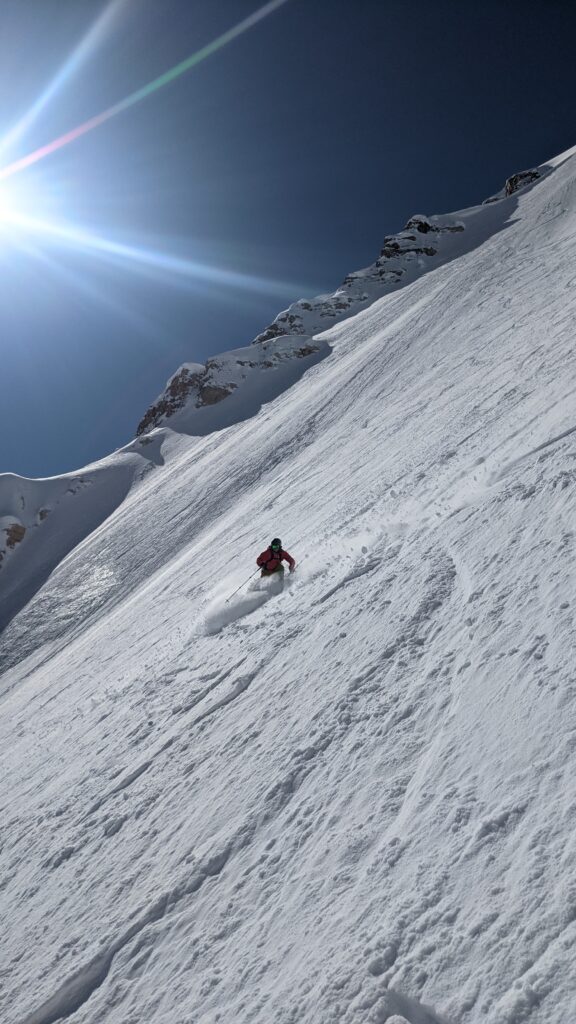
Back down on the glacial bench, things were starting to warm up. We quickly traversed back to the first boot pack section and noticed that the loud noise heard on ascent was the serac below calving as the sun first shone onto it approximately an hour and a half after our crossing.
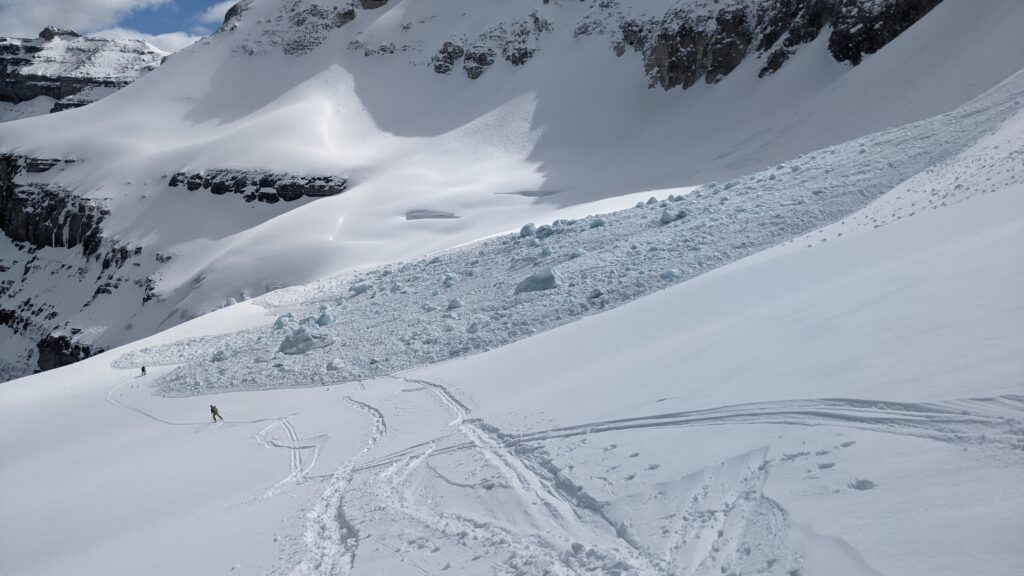
We were quite speechless as our ascent tracks had been covered. It’s hard not to think that had you been there an hour or two later how things could turn out very differently for you and your friends. As concerning as it is, these events should be and were expected in this type of terrain. You have to be prepared, know the hazards on your chosen route, and know how to manage them. Even with the best preparation, there are always objective hazards that cannot be foretold in ski mountaineering and pretty much all other backcountry sports. Training through courses taught by certified mountain guides and experience will help with risk management, but it’s important to remember objective hazards and the mountains ALWAYS have risks associated. In this case, starting early made a huge difference, and the ski down underneath the serac is much quicker than the ascent, which was our plan to further mitigate risks as the hazard increased with daytime warming. This was a very, very humbling experience that I considered not sharing in the trip report, but I think it’s important to show the real, honest side of the hazards and risks of the alpine so that others proceed with caution. We felt very fortunate to continue on with our adventure to the valley below.
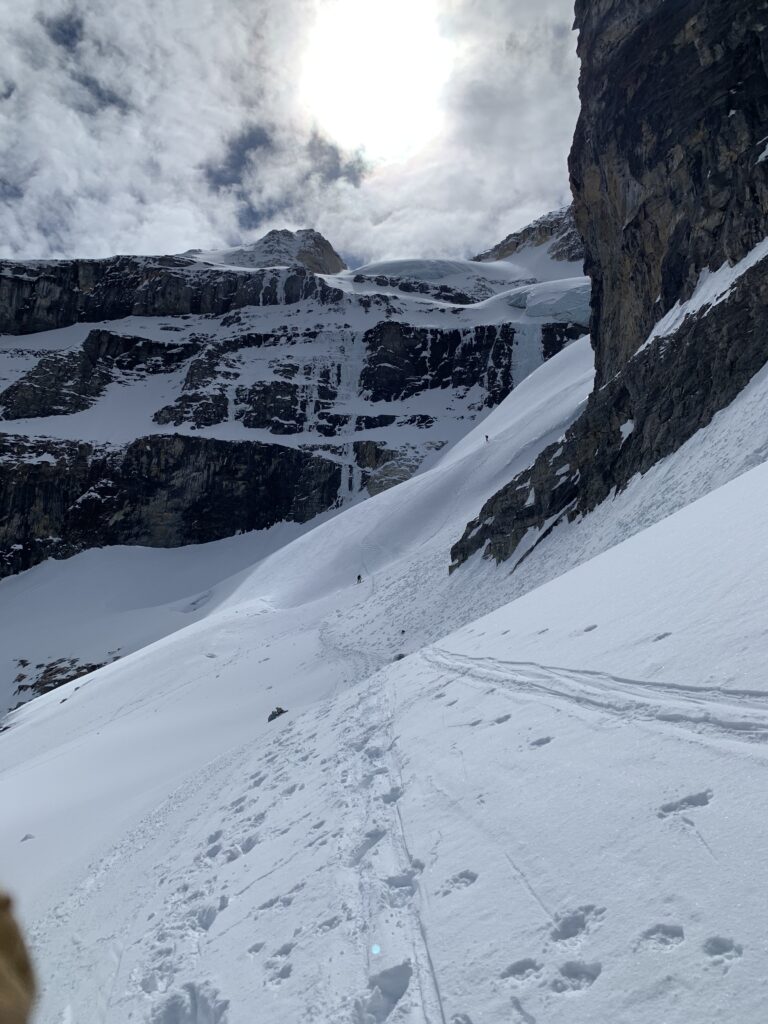
A quick traverse through the lower valley and some spring skiing maneuvers had us back at the cars by 12:30pm, just in time for second lunch.

Overall, this was quite an adventure with a great group of friends and colleagues. The skiing was an absolute blast, and we were clearly humbled by the experiences of the descent and will be continuing to process this in planning future trips. A key takeaway is to get the proper training before trying backcountry sports. For this type of trip, glacier travel, crevasse rescue, avalanche safety, wilderness first aid courses and technical skiing skills are definitely necessary. These are all courses and training opportunities offered through or by our Edmonton Section, and we are excited to continue offering these through the summer and the skiing specific opportunities next winter. Thanks for reading, stay safe out there, and most of all, have fun!

